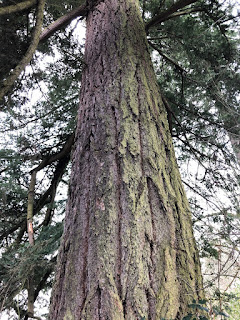I’ve known about this park since shortly after I moved to Eugene, and though it’s only 30 minutes by bicycle from my front door, I only finally visited it weekend before last. My friend Thomas said it was his favorite birding spot in Eugene while he was a birder here in high school (he lived next door to where I am now, and his parents still do). I was even close several times this past year as I visited the delightful Small is Beautiful Farmstand for their incredible selection of veggies, eggs, milk, flowers, and other goodies. I also rode right past it on a 40-mile biking trip with my friend Andrew Broan and two other friends last August. I even pointed it out to them as a well-known birding hotspot. Hileman Landing is the largest swath of undeveloped riparian habitat near the city of Eugene, on the west bank of the Willamette River. As an undeveloped, natural park, it’s not a place for disk golf, soccer, or such. Wear your rubber boots, be prepared to brush against stickers and thorns, and enjoy the nature. I was only five minutes from home when I realized I left my camera at home, oops. So this blog is populated with photos from my mobile phone.
This isn’t a truly natural area though, and we can only guess at what this place must have looked like just two hundred years ago. Through a mere century and a half of deforestation in the surrounding mountains as well as through prevention of fires and floods, European immigrants have upended the very nature of disturbance in nature. Where there wasn’t, there is now too much. Where there was once much disturbance is now much less. Then add to that the immense effect that introduced plants and animals have had, it is forever changed. In this photo you can see the main forest of cottonwoods isn’t old (they grow very fast), and the understory is dominated by introduced Himalayan Blackberry.
One source of disturbance that remains the same is that from the American Beaver. It’s amazing how they can chew through huge trunks. There probably aren’t as many of them now as in pre-settlement times, but there are more than some people would like.
This wasn’t always a park though, and while some people consider things like this truck and these trestles to be historical markers, I think they are just old trash that should be removed.Much of the park is actually along a small side-channel of the Willamette River, and with the current high water levels typical of this time of year, it was flowing fast and clear, giving me the impression that I was on a secluded wilderness river (if you ignore the trash that has floated down from Eugene and got caught in the driftwood). Black Phoebe was here.
One of the most exciting things I saw was our first true sign of spring – which in western Oregon begins in January and lasts through early June: the flowers of Oemleria cerasiformis, which I grew up knowing as Indian Plum and is now more commonly known as Osoberry. It’s a member of the rose family and the fruits are indeed edible. I have four that I planted in my yard, and I hope to have enough fruits to follow a recipe I found for jam made from our native Osoberry, Red-flowering Currant, and Oregon Grape. This is also a hummingbird plant, and here, miles from any feeders, were several territorial Anna’s Hummingbirds feeing on the Osoberry flowers, beating the first arriving Rufous Hummingbirds to the punch by a couple of weeks.
This is the growing season for Polypodium glycyrrhiza, the Licorice-root Fern. I used to like the sweet, licorice flavor from chewing on the rhizomes, but I now don’t care for the lingering bitter aftertaste. My grandmother made a tea from the dried rhizomes.
One of the banks rises quite a bit above the floodplain, and the few Douglas-firs here looked old enough to pre-date European colonists in the area. But I wonder if they are old enough to have been seen by the Native Americans before their populations were wiped out by introduced human diseases.






















